Join US
Do you want to build the fantasy world you’ve always dreamed of?
Subscribe to receive notifications when a new post is out and for our monthly newsletter!
You can always unsubscribe anytime.
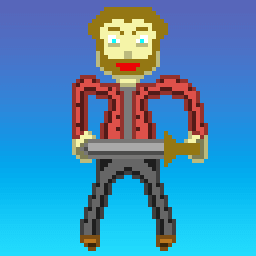
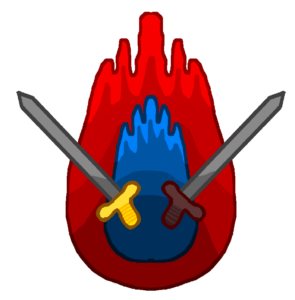
This is the first in a series of articles designed to help beginners. It’s also the first of a two-parter chronicling the types of fantasy characters who appear in these worlds.
Characters are a core element in constructing a fantasy world. Without them, there’s no story. They come in all shapes and sizes and they have their own personalities which drive how they see the world. A wizard might be more concerned with a raging war that’s heading his way while a hobbit just wants to relax and enjoy his bountiful garden. Maybe a Dark Lord is plotting world domination whereas a dwarf is only interested in mining. A diverse cast of characters breathe life into a world and only enriches the story.
How do fantasy characters impact the story, you might ask? It depends on the story you want to tell and the world it takes place in. In the Harry Potter series, Harry becomes a wizard and attends Hogwarts where he gets an education in magic while fighting Voldemort, who’s become his sworn enemy. Besides those two stories, Harry grows from a child to a young adult while navigating the pitfalls of the teen years. He suffers setbacks and enjoys personal triumphs and you’re there with him every step of the way. You develop a connection with him because you can identify with his struggles.
There are two types of fantasy characters: major and minor. Major characters drive the story, pushing it forward to a conclusion, for good or ill. They usually tend to appear in many scenes, from the beginning to the end. Minor characters have a specific role to play in one or two parts and then they’re gone until they’re needed, if they’re needed at all again.
Here’s an example of what I’m talking about. Going back to Harry Potter, he’s a major character from beginning to end as he’s left off at his aunt and uncle’s doorstep as an infant to finally finishing Voldemort off once and for all. Vernon and Petunia Dursley only appear in the beginning and the end of each novel with the exception of the last one; they don’t play a large role in each subsequent novel.
So you might be wondering what types of fantasy characters should I put in my world? Taking a look at enormously popular works such as The Lord of the Rings you’ll notice many of them use identical character archetypes.
And that’s what we’ll look at today, so let’s get started with an archetype that everyone knows about: the hero.
If there’s one thing the genre is known for, it’s heroes. In nearly every work within the genre, one of the fantasy characters plays the role of the hero, the person tasked with eradicating evil and saving the world. Harry Potter and Link from The Legend of Zelda are just two of countless examples. The hero is one of the most beloved types of fantasy characters.
When making the hero, giving him flaws are a great way to go. The hero having flaws goes a long way in making him relatable to the audience. Perfect heroes are dull and uninspiring and thus, easily forgettable.
Through his ups and downs, the hero needs to have some kind of growth throughout the story where he discovers that the strength he needed to vanquish his fears was always within himself, he just didn’t look deep enough. His rebirth occurs after his fall, when he’s at his most vulnerable after losing everything he cared about and he’s forced to admit the truth to himself. Looking into his heart, he musters the strength to get back up and keep fighting and his newfound strength enables him to defeat the villain.
When developing the hero character, take as much time as you need. This role is too important to let slide, seeing that he’s an active participant in the story from the beginning to the end and one you want your audience to rally behind through the good and bad times.
For every hero, his stalwart friend stands by him, especially at his lowest when he’s lost everything and he has nobody else at his side, never doubting who he is at heart. This is what’s called the sidekick character. Knowing the hero the longest out of all the characters, the sidekick is more likely to correctly interpret what the hero is feeling. He also plays the role of the confidant, as the hero feels as if he can openly share his doubts and feelings with his friend without fear of being judged.
The sidekick is one of the most valuable types of fantasy characters.
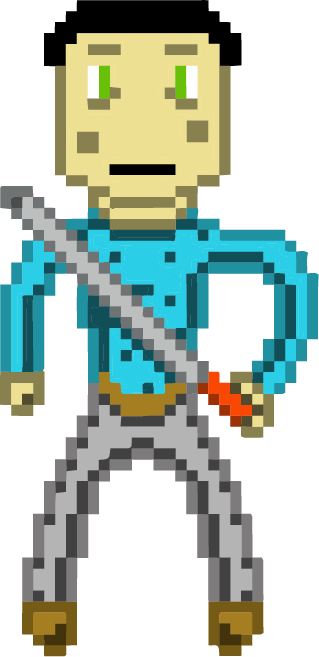
One common element of all sidekicks is that they remain faithful to the hero. This is largely due to their deep friendship. But being faithful doesn’t necessarily mean being blind to his friend’s faults. The sidekick is more likely to call him out on the decisions he disagrees with. This is because the sidekick has the hero’s best interests in mind.
In The Lord of the Rings, Samwise Gamgee (side note: people say he’s the true hero, not Frodo Baggins and I agree on this count but for the purpose of this article, I’m using him as an example of a sidekick character) stands by Frodo’s side throughout the events of the three novels, helping him get the Ring to Mordor so it can be destroyed. He helps Frodo when he’s down and he recognizes the changes in his friend and he knows it’s because of the Ring. When Frodo suggests having Gollum lead them to Mordor, Sam voices his disapproval but when he is overruled, he acquiesces to Frodo’s will, though he keeps an eye on Gollum, knowing what he’s capable of.
So how do you go about making a sidekick? He has to be different than the hero in terms of temperament and mannerisms. If the hero is a bit of an idealist, the sidekick should more be of a realist for example. The audience needs to be sure which one is which so take some time in creating the sidekick, since he’s almost always a major character.
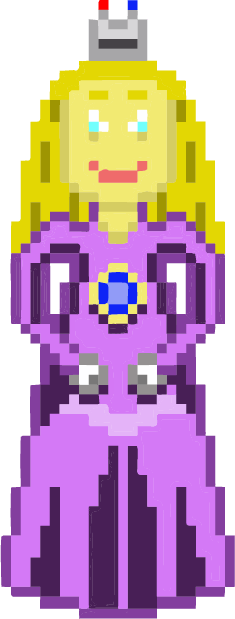
Another thing that the fantasy genre is infamous for, it’s the Princess. Peach and Zelda are two well-known Princesses, having appeared in many video games since the 1980s. They usually tend to play the role of the damsel in distress and act as the love interest of the hero. The Princess or the love interest serves as the reason for the hero’s journey, fueling his determination to liberate her from the villain’s clutches. After vanquishing the villain, the two have their happily ever after.
Just because they’re portrayed as the damsel in distress doesn’t mean that’s the only thing they do. They’re now playing more of an active role in the story, helping the hero on his quest by providing him with invaluable knowledge. They usually get captured at one point in the story and their capture usually marks the beginning of the endgame leading to the hero’s confrontation with the villain.
Princess Zelda in Breath of the Wild is battling Calamity Ganon within Hyrule Castle — and she’s been doing it for a century! — during the course of the game and she urges Link to save the four Divine Beasts from Ganon’s control. Here Zelda is playing a prominent role in the story and giving Link the information he needs to seal Ganon’s defeat.
When creating fantasy characters in this vein, Princesses have two personas. Their public persona is being overly polite and have an aura of leadership, seeing that they’re expected to take the throne one day whereas their private one exhibits a mischievous or independent streak where they’re content to just be themselves without having to adhere to royalty norms. Princesses are counted among the major types of fantasy characters.
Neither good or bad, rogue characters live in-between. They’re usually considered outcasts of society and live their lives according to their moral values. They’re popular because they provide a unique perspective to the drama unfolding across the world. Rogues aren’t inclined to fight because it’s the right thing, they do so because they believe they can get something out of it.
The rogues wind up becoming among the popular types of fantasy characters for the aforementioned reasons.
Since they live their lives by their moral code, they’re willing to do business with just about anyone and since they’re outcasts, they tend to be involved with the underworld. They care not about wars, as long as they do their job and get what they’re owed.
Unlike the hero, rogues aren’t afraid to play dirty in fights, considering they have no qualms about doing whatever it takes to win, even resorting to cheating. While heroes prefer their fights to be aboveboard for both sides, rogues know it’s foolhardy to play nice when your enemies have no intentions of doing precisely that, that’s why they get down in the mud against their opponents.
Han Solo is a classic instance of the rogue archetype. He’s aware of the war between the Rebellion and the Galactic Empire and he doesn’t care about it. He’s only interested in making money and he works for Jabba the Hutt. When Obi-Wan Kenobi approaches him with a deal to take several passengers to Alderaan, Solo accepts after the two haggle over his fee for taking them there. When he learns about Princess Leia and sees how much money he can get from saving her, he helps break her out of the Death Star.
When designing the rogue character, keep in mind that the hero-rogue relationship shows two different perspectives of the world. Consequently, they clash and their arguments help them better understand each other. You want that tension to always be there, especially when they become friends because there’s still a part of their viewpoint that will never change. Rogues are adept at being major or minor characters, it depends on the story you want to tell and the world it takes place in.
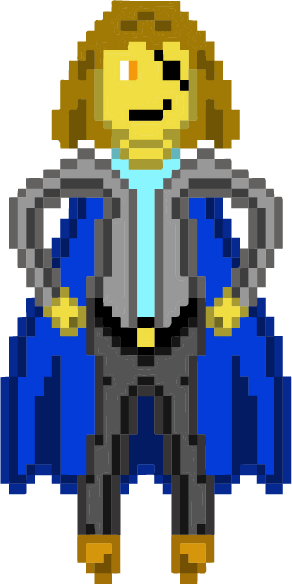
Reading this long article, you underscored just how much work that goes into making different types of fantasy characters. Don’t let that stop you from making memorable characters. Great characters go a long way in making a fantasy world feel real.
While this is the first of a two-parter, the four archetypes covered — the hero, sidekick, princess, and rogue — are used in nearly every work in the fantasy genre. They each play a role uniquely suited to them and your job as a creator is to design your characters in a way that makes it clear who they are, what they stand for, and how they see things. Naturally, you want some tension between some of them to illustrate their differences, which in time will lead to them finding common ground and becoming friends.
Using different types of fantasy characters can only strengthen your story and your world!
The second article covering the four other types of fantasy characters can be found here.
Let me know what you think in the comments below. (Note: this is an account-exclusive feature).
If you don’t have one, you can register here. It only takes a few moments of your time!
Liked this article and want to subscribe? All you have to do is fill out the form below and that’s it!
Thanks for reading this and until the next time,
Sunfire
Subscribing means you receive:
You can always unsubscribe anytime.
Do you want to build the fantasy world you’ve always dreamed of?
Subscribe to receive notifications when a new post is out and for our monthly newsletter!
You can always unsubscribe anytime.